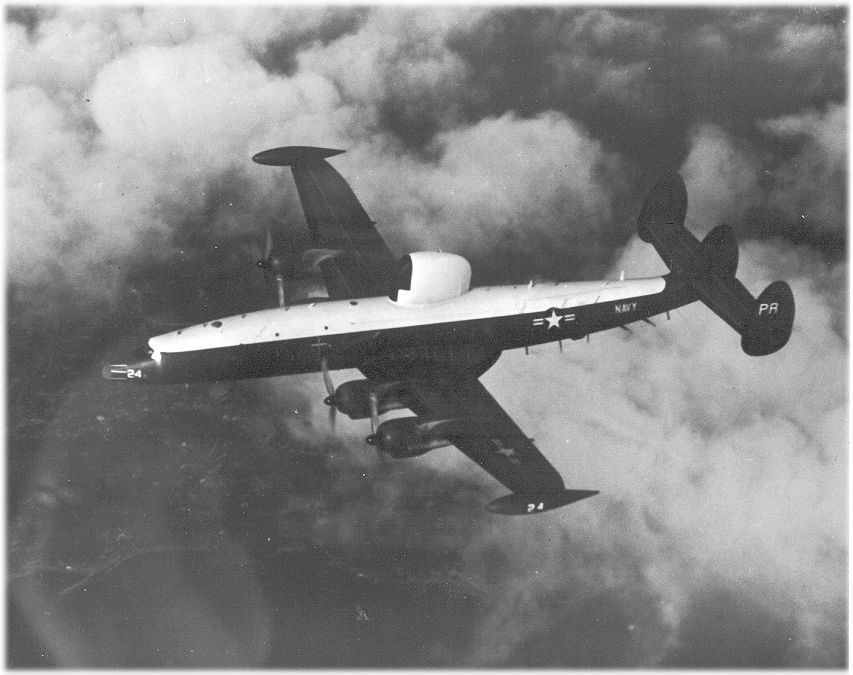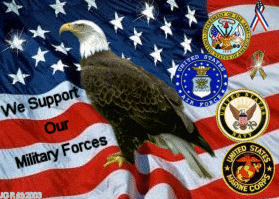|
Posted on 03/09/2006 7:15:31 PM PST by alfa6
|
|
 are acknowledged, affirmed and commemorated.
|

| Our Mission: The FReeper Foxhole is dedicated to Veterans of our Nation's military forces and to others who are affected in their relationships with Veterans. In the FReeper Foxhole, Veterans or their family members should feel free to address their specific circumstances or whatever issues concern them in an atmosphere of peace, understanding, brotherhood and support. The FReeper Foxhole hopes to share with it's readers an open forum where we can learn about and discuss military history, military news and other topics of concern or interest to our readers be they Veteran's, Current Duty or anyone interested in what we have to offer. If the Foxhole makes someone appreciate, even a little, what others have sacrificed for us, then it has accomplished one of it's missions. We hope the Foxhole in some small way helps us to remember and honor those who came before us.
|
 "Be Quick, Be Quiet, And Be On Time" I knew I wanted to design airplanes when I was 12 years old" says Johnson. "I read every Tom Swift novel I could get my hands on. I read "Tom Swift and his Airplane"; "Tom Swift and his Electric Car" ; "Tom Swift and his Submarine" and I said that's for me." A native of Michigan, Johnson was born in the remote mining town of Ishpeming on November 27, 1910 to immigrant Swedish parents. Kelly was born seven years after the Wright Brothers made their first successful flight. While attending grade school, Kelly was chided by some classmates for his name; Clarence. The other boys started calling me "Clara". One morning while waiting in line to get into a classroom, one boy named Cecil started with the normal routine of calling me "Clara". Kelly tripped the boy so hard it broke his leg. The boys then decided that I wasn't a "Clara" and looking for a new nickname started calling me "Kelly". The nickname came from the popular song at the time.."Kelly With the Green Neck Tie". From that time forward it would always be "Kelly Johnson". After making his decision at the age of 12 to design aircraft, he went ahead to design his first airplane. Kelly called his first design "The Merlin 1, Battle Plane". Several weeks later he saw his first airplane; a World War I Jenny. His decision was confirmed. He later moved to Flint where his father had a construction business. Kelly graduated from Flint High School, working summers with his father and in the motor test section of the Buick Motor Car Company. By graduation he had saved up $300. He tried to give it to an Instructor at the Flint Airport in exchange for flying lessons, but the Instructor shook his head and probably changed the entire course of Kelly's life. "I've always had the greatest respect for that man," Kelly said later. "He needed that money more than anything else in the world. But instead of taking it, he said, "Look kid..save that money and go to school." Kelly graduated from Flint Junior College and completed his education at the University of Michigan, where he received His Bachelor of Science Degree in 1932. Kelly Johnson worked his way through school by picking up scholarships, washing dishes and helping a professor; Edward Stalker, as a Teaching Assistant. He went on to received his Master of Science Degree in Aeronautical Engineering in 1933. During this period he picked up small teaching fellowships and augmenting his income by renting the University's wind tunnel to run tests as a consultant on models of Indianapolis racing cars, trains and aircraft. "I made more more money that year than any of the first 10 years I worked for Lockheed." Kelly grins. After graduating froom the University of Michigan in 1932 Kelly Johnson wenr out West to look for work in the aircraft industry. No work was to be found. Ther only encouragement Kelly recieved was from the Lockheed Company which had just come out of bankruptcy. No jobs were available at the time but engineering executive Richard von Hake suggested to Kelly. "Why don't you go back to school and come out again next year? I think we'll have something for you." So back to the U of Michigan for a year to get a Masters in Aeronautical Engineering. Kelly's tuition was paid in part by a $500 fellowship grant and lots of hours at the wind tunnel. Among the projects that Kelly helped with in the wind tunnel was a model of the Lockheed Electra. The aircraft had some stability problems but the university professors and Lockheed execs thought that they were. Kelly Johnson thought otherwise.  He left college in 1933 with a master's of science degree, a used car, and plans to return to Lockheed and the promised job in California. Lockheed executive Cyril Chappellet and Chief Engineer Hall Hibbard hired the young Johnson as an $83 a month tool designer until there was an opening in engineering. Kelly Johnson was asked his opinion of the Electra, the plane that the newly reorganized Lockheed Compamy was banking it's future on. Kelly never one to hide his light replied,"Practically the first thing I told Chappellet and Hibbard was that their plane was unstable and that I did not agree with the university's wind-tunnel report." Back to Michigan U went Kelly Johnson to see if he could do better. It took 72 wind tunnel test but Kelly was able to improve the Electra. The result was the classic twin tail of the Electra line. Also in the design of the Electra was the introduction of "Fowler Flaps that enhanced low speed stability and braking and helped to improve the aircrafts speed in flight. The design of the Fowler Flap earned Kelly Johnson the first of over fifty awards that he would gather over his carrer.In 1937 at the age of 27 Kelly Johnson was awarded by the Institute of Aeronautical Sciences the Lawrence Sperry Award for "important improvements of aeronautical design of high speed commercial aircraft". The Sperry award was given annually "for outstanding achievements in aeronautics by young men."  Also in 1937 Lockheed won the a design contract that would lead to the P-38 Lightning. It was Kelly Johnson's work in the wind tunnel that helped to solve the problems of compressibilty that threatened to end the Lighting program. Lockheed went on to build almost 10,000 P-38s whixh fought in all theaters of the war amd was flown by the two top aces of the United States. In 1938 with Hitler threatning war in Europe the British sent a purchasing commission to the United States to lookk for aircraft to help re-arm England. Among the planes the comission was looking for was a coastal patrol bomber/antisubmarine aircraft. With only commercial aircraft in production Lockheed was not on the original schedule for the British comission. A change of plans however led the British to Lockheed with only five days notice to Lockheed. With only five days to come up with something to present to the British Purchasing Commission Lockheed engineers and shop personell, using the Electra Model 14 as a starting point produced a full scale wooden mockup of a medium reconnaissance bomber. The British were so impressed by the enthusiasm of the Lockheed employees and their mockup that Lockheed was invited to send a group of people to England to confere with the Air Ministry on the proposed bomber. Of course Kelly Johnson was a member of this team. At the meeting with the Air Ministry in England new specifications were requested that would require a major redesign of the proposed bomber. Working for three straight days over a holiday weekend, taking the occasional catnap Johnson redesigned the proposed bomber to meet the new specifications. The British were astounded that the plane could be redesigned in such a short time, especially by such a young engineer. After a week of additional discussions the British called Courtland Goss of to the side to inquire as to wether or not Lockheed would stand behind their young engineer. Courtalnd Goss recalled the conversation thusly... "Mr. Goss, we like your proposal very much, and we very much would like to deal with Lockheed. On the other hand, you must understand that we're very unused in this country to dealing--especially on transactions of such magnitude--on the technical say-so of a man as young as Mr. Johnson. And, therefore, I'll have to have your assurance . . . that if we do go forward, the aircraft resulting from the purchase will in every way live up to Mr. Johnson's specifications." Of course Goss assured the British that Lockheed had every confidence in the capabilities of Kelly Johnson and that the Air Ministry would not be dissapointed with the new aircraft. On June 28, 1938 the British Air Ministry signed a contract worth $25,000,000 dollars for 200 of the proposed bomber plus as many more that could be built and delivered by December of 1939 up to a total of 250 aircraft. At the time it was the largest single order for aircraft that an American aircraft company hed seen. The proposed new bomber was the Hudson, the progenitor of the Venura and Harpoon that came later in WW-II.  In 1943 the "Skunk Works" was born. Lockheed had a contract with the Army Air Forces to develop a jet fighter built around British DeHavilland jet engine in only 180 days. The rush was in response to repoert that the Germans were flying a jet aircraft. Kelly Johnson with the approval of Lockheed President Robert E. Goss, Johnson formed a team of 23 engineers and 103 shop personnel that were mostly pirated from other projects. The team worked in a small assembly shed at the Lockheed plant in Burbank. Some reports indicat that an old circus tent was used owing to the lack of available secure space due to the need of wartime production demands. In a 143 days, 37 days less than the contracted amount the P-80 Shooting Star made it first flight on January 8th, 1944. The Advanced Development Projects team had it's first succes. The nickname "Skunk Works" came from the Al Capp comic strip "L'il Abner" where the denizens of Dogpatch would throw in skunks, old shoes and who knew what else to make that fearsome brew "Kickapoo Joy Joice". The folks at Lockheed started to refer to the building where Kelly Johnson's crew was working as "The Skunk Works" because who knew what they where building.  Just a few of the military aircraft to come out of the Skunk Works ere the T-33 trainer variant of the F-80. The T-33 probanly traiined more pilots to fly jets than any other aircraft. The F-104 Starfighter, the "missle with a man in it" of the late 1950's. The P2V Neptune naval patrol bomber. It was a P2V, the Truculent Turtle, that etablished a non-stop distance record from Perth, Australia to Columbus,Ohio in 1946 of 11,235 miles. Another Lockheed aircraft to benefit from Kelly Johnson's work was the Constellation. The Constellation was a civil airliner that was taken over by the military when WW-II broke out. After the war in became one of the premier piston engined airliners before the advent of the jet airliner. It also was used by the United States military in various forms as well.  It was the 1950s that saw the development what could arguably be two greatest designs of the Skunk Works, Driven by a need to conduct overflight reconnaissance of the Soviet Union in order to collect data on the Soviet military and misasle work the U.S. goverment turned to Kelly Johnson and the Advanced Development Project team. In 1955 the Skunk Works rolled out the long winged U-2. The U-2 could fly at over 70,000ft with a range of 4,000 miles. The U-2 was also a money saver. Johnson's team returned $2,000,000 of the $20,000,000 contract. Lockheed also built 26 of the U-2 aircraft instead of the 20 airctaft that was in the contract.  The other great aircraft to come out of the Skunk Works was of course the SR-71 Blackbird. in 1960 the U.S. Air Force gave the Skunk Works the go ahead to design and build what would become the SR-71. The idea of designing a plane that could fly at sustained speed in excess of Mach 3 was the most difficult challenge thast Kelly Johnson and the Skunk Works team would face. An aircraft that could fly at these speeds would take a whole host of inovations that at the time were basically unknown. Metals, fuel, plastic and wiring were just a few of the problems the the Skunk Works team had to overcome. It all came together however and in 1962 the first of the A-12s made it's maiden flight. The YF-12A flew in 1963 with the SR-71 making it's first flight on December 22, 1964. The SR-71 in the 1970s went on to set records for speed (2,193 mph), altitude (85,069 feet). A New York to London flight of 3,470 miles was accomplished in one hour and fity four minutes. London to Los Angeles a distance of 5,463 miles only took three hours and forty seven minutes. In March of 1990 for it's retirement the SR-71 streaked across the United States in 68 minutes in a 2,400 mile coast to coast flight.  |
bttt












You quick on the draw tonight :-)
Have a great day
Regards
alfa6 ;>}
me me I am first!


Another plane that kept on going and going and...
Regards
alfa6 ;>}

| March 10, 2006
A Great Coach
Read:
|
 Although Billy Connors was not a great athlete himself, many people consider him to be the best pitching coach in major league baseball today. New York Yankees manager Joe Torre said: "Sometimes the best players can't coach, because they were such naturals . . . whereas guys like Billy had to work at it, and pay attention to all the little things."
Although Billy Connors was not a great athlete himself, many people consider him to be the best pitching coach in major league baseball today. New York Yankees manager Joe Torre said: "Sometimes the best players can't coach, because they were such naturals . . . whereas guys like Billy had to work at it, and pay attention to all the little things."
Connors also knows and cares about the men he coaches. All of them have been to his home for a meal. His genuine concern opens their ears to what he has to say.
This account of a caring and competent coach made me think of Timothy in the New Testament. Though at times he seemed timid and fearful (2 Timothy 1:6-8), Paul considered him proven and dependable in guiding others. The apostle wrote, "I trust in the Lord Jesus to send Timothy to you . . . . For I have no one like-minded, who will sincerely care for your state" (Philippians 2:19-20).
Spiritual coaching is not just telling people how to accomplish great things for God. It begins with caring for them and earning the right to be heard. Then, with a keen eye and a kind word, we can encourage others in the way of faith.
Any Christian can become a great spiritual coach by the grace of God. —David McCasland
Genuine concern for others is the mark of a great spiritual coach.
Howdy Mayor. Got snow??
Hi alfa6 - Ben Rich's book is on my reading list. I hear it's great.


Supporting our Soldiers, Sailors, Marines, Airmen, and Coast Guardsmen at more than 1,000 places across the U. S. and around the world.
Thank you for the ping Alfa....hope this post was ok....it's all I have! LOL Great post!
No, it's all gone. Today it was 47, tommorrow 50 and Sat 55..
Snow is all melted... I hope spring is here.
I've always been envious of people who knew what they wanted or were going to do or be when they were very young. I never knew and still don't.
Thanks for the interesting new thread.
you'll need to fix your HTML to change www.vetscor.org to www.vetscor.net. some dirtbag stole our .org address ... I'm trying to get it back
elsewise ... thanks for the FOXHOLE thread ... I miss them

±

"The Era of Osama lasted about an hour, from the time the first plane hit the tower to the moment the General Militia of Flight 93 reported for duty."  Toward FREEDOM
Toward FREEDOM
Just so's you feel better, it's snowing here in Victoria and Port Angeles. In March! What a travesty!
Half an inch on the ground, and fog rolling in to boot!
For your enjoyment, two little known factoids...
1. The crew of the "Truculent Turtle," the P2V Neptune that set the world's distance record for an unrefueled flight in 1946 from Perth, Australia to Columbus, Ohio, consisted of 4 USN pilots and a young kangaroo...
2. The Blackbird was originally designated by the military as the RS-71...Reconnaissance being the keyword here..but LBJ, who who known for his vanity, hated to wear reading glasses, so during a speech announcing the plane, misread it as the SR-71...immediately afterwards the designation was changed...
Disclaimer: Opinions posted on Free Republic are those of the individual posters and do not necessarily represent the opinion of Free Republic or its management. All materials posted herein are protected by copyright law and the exemption for fair use of copyrighted works.